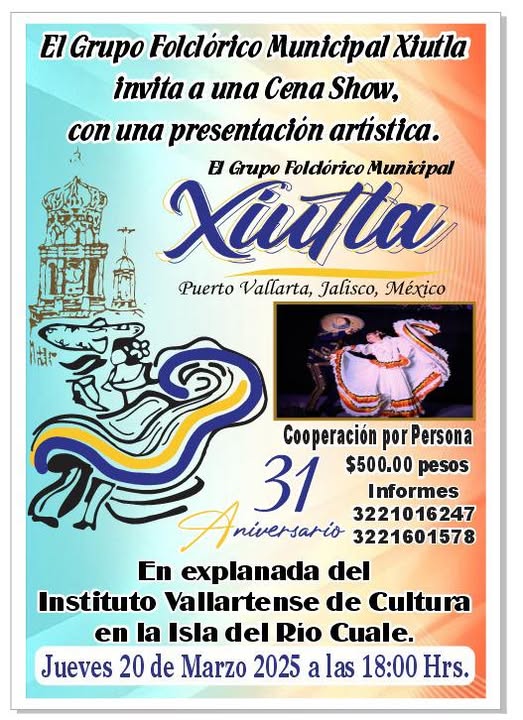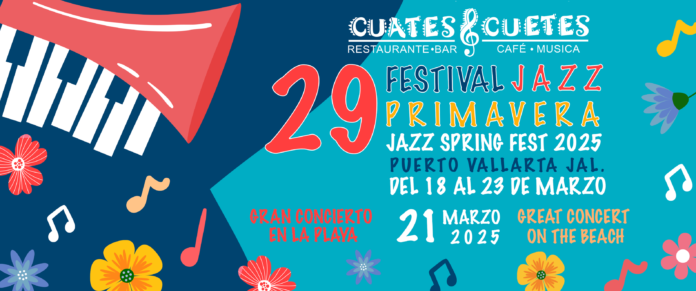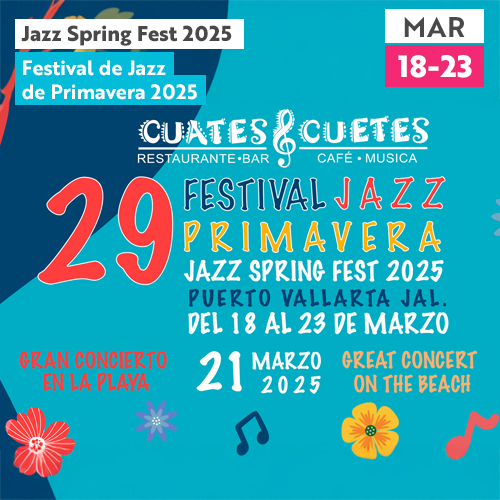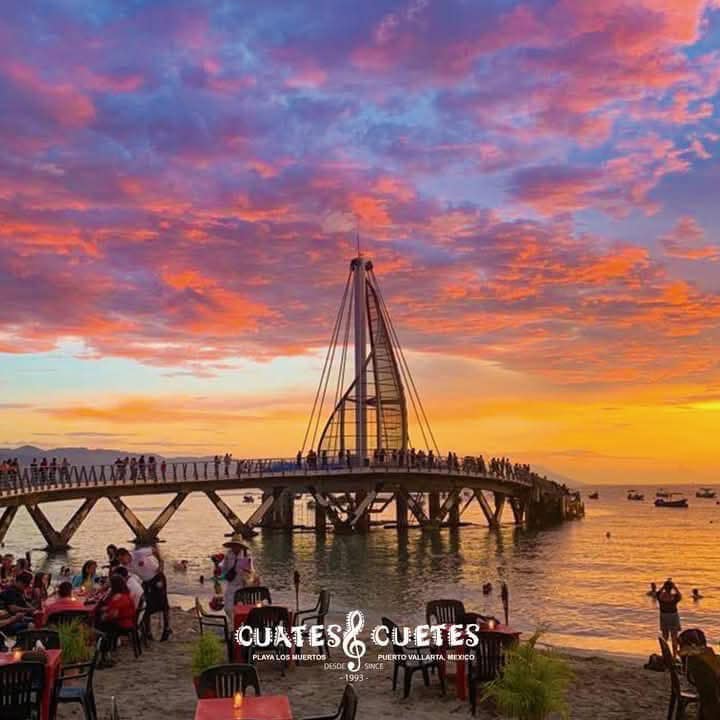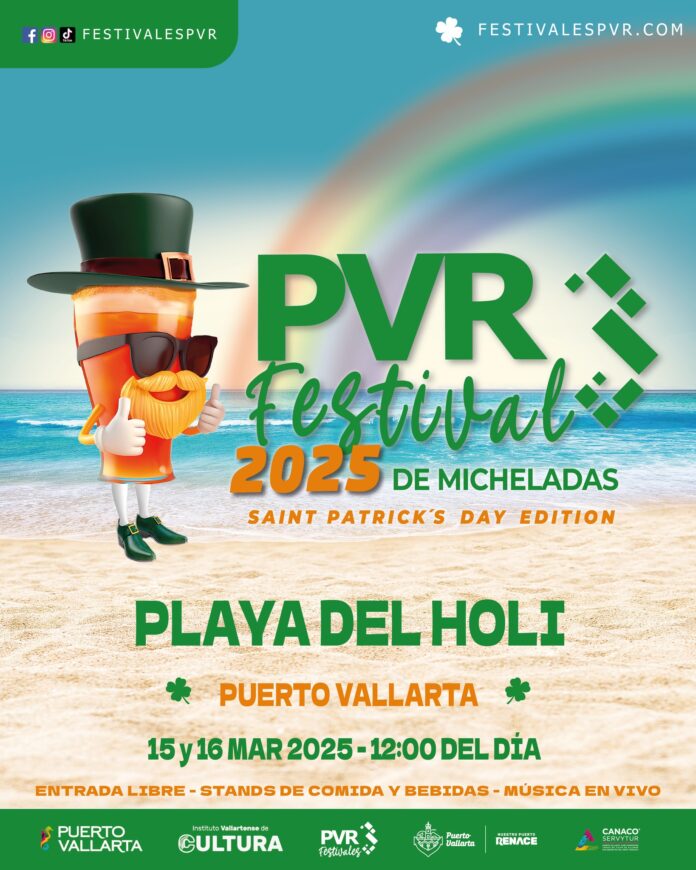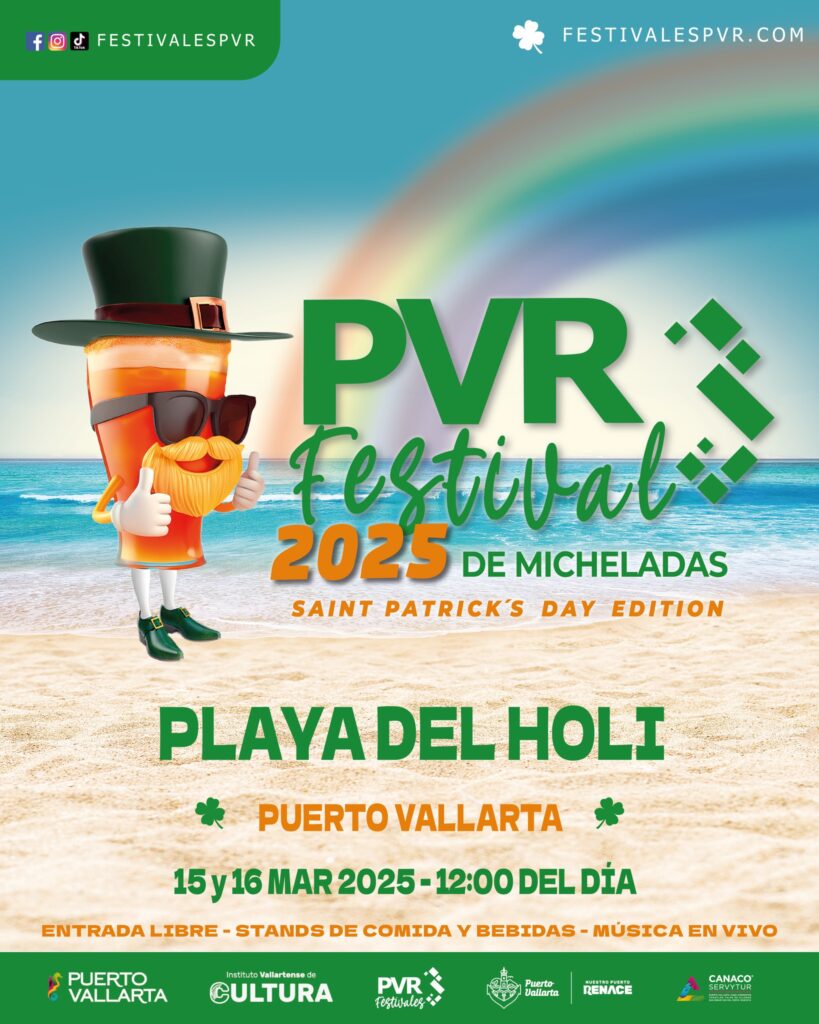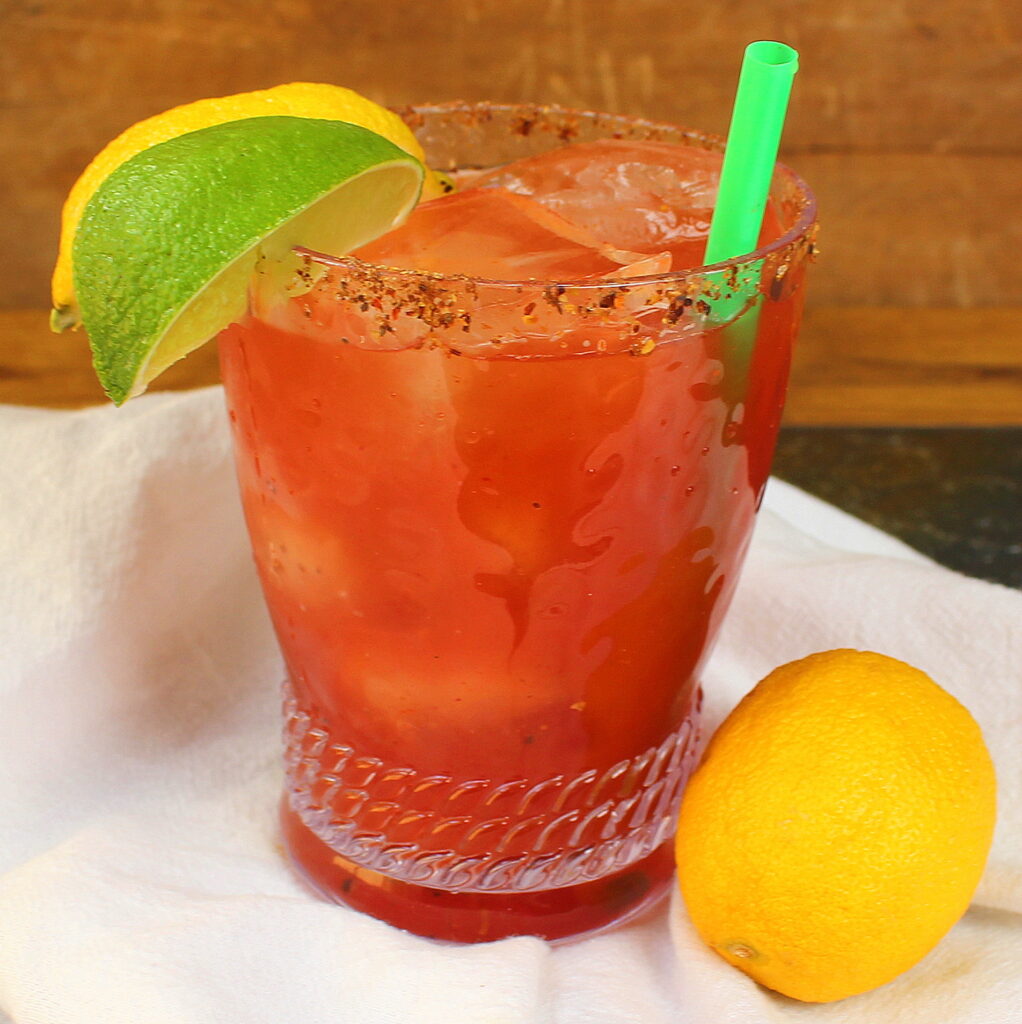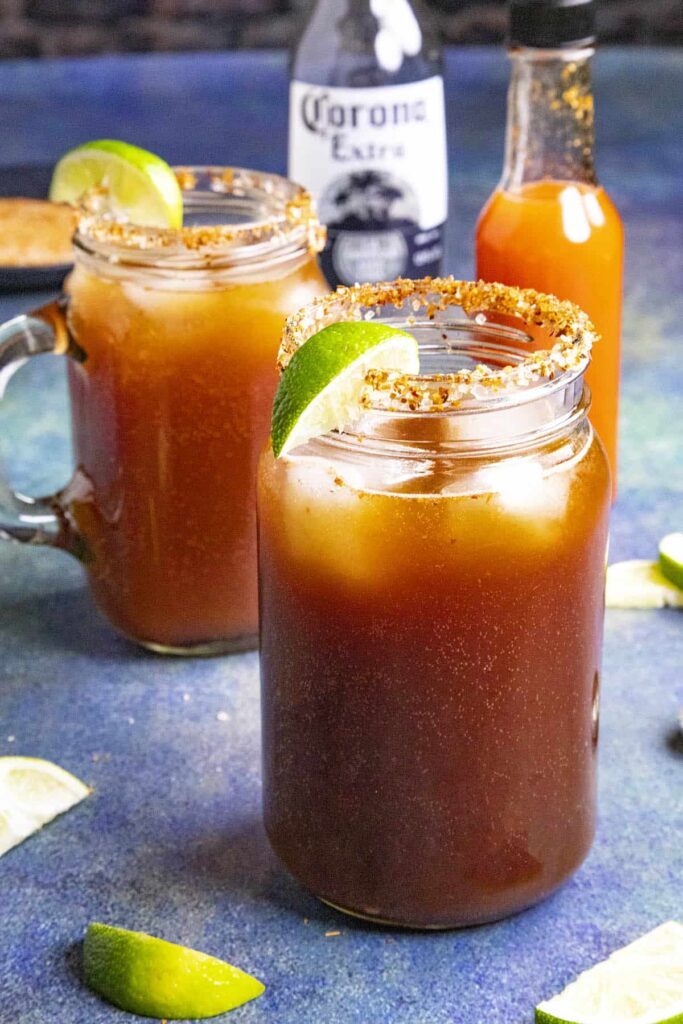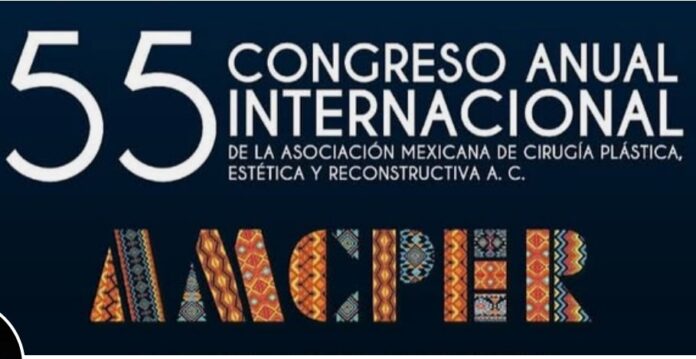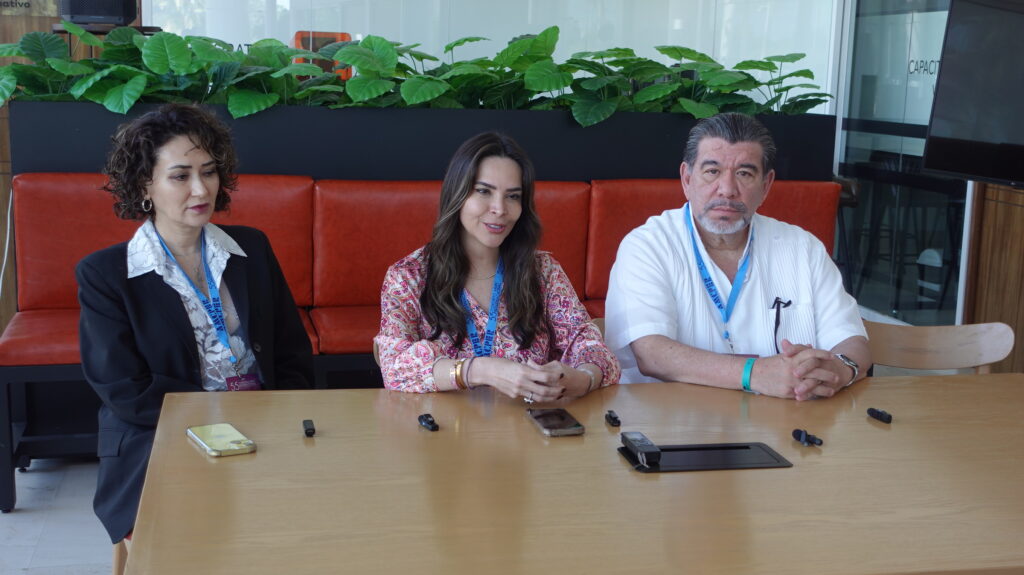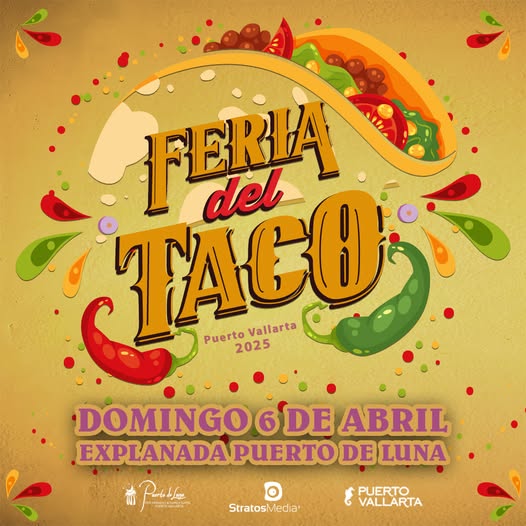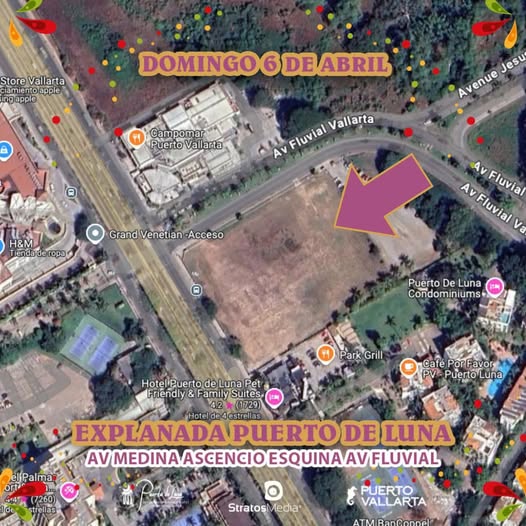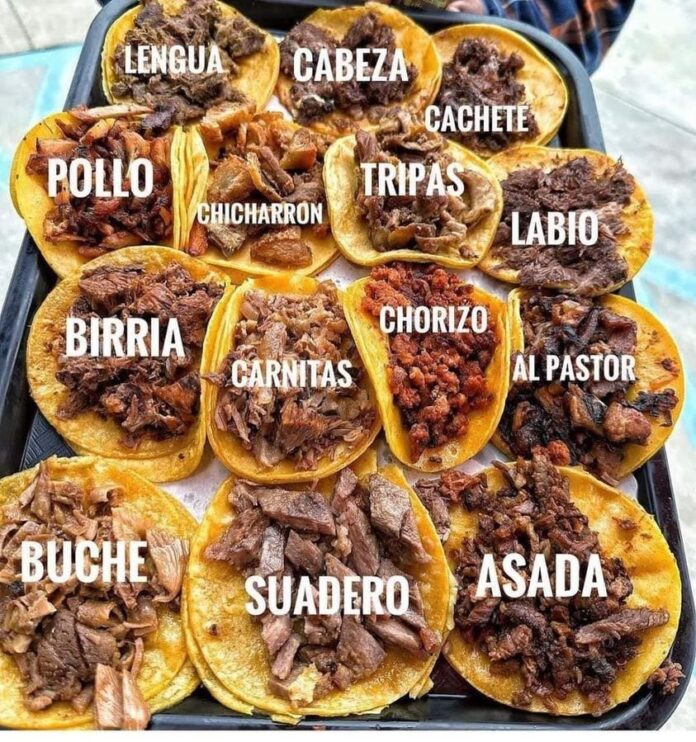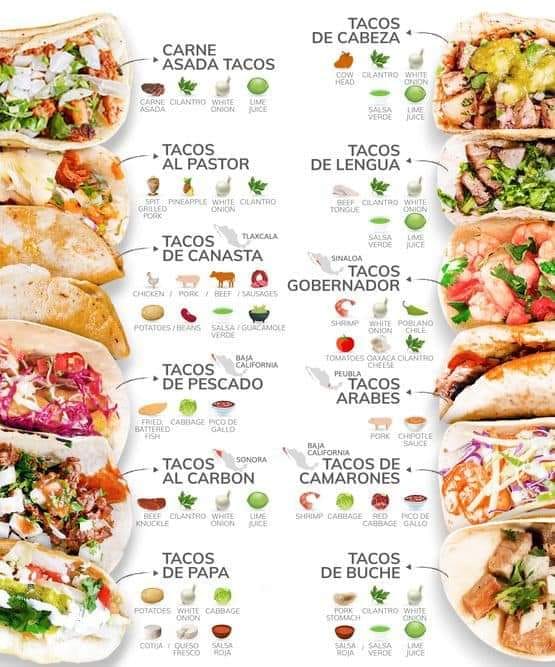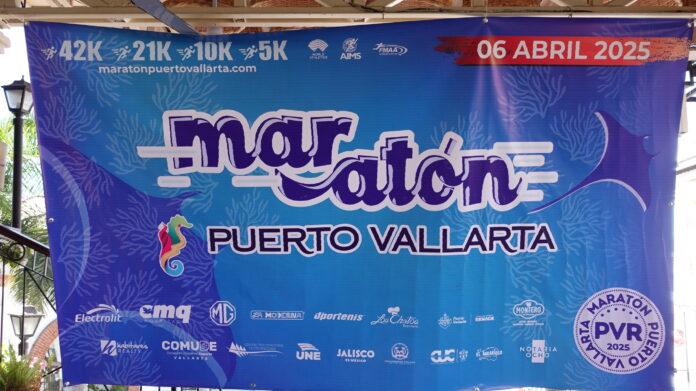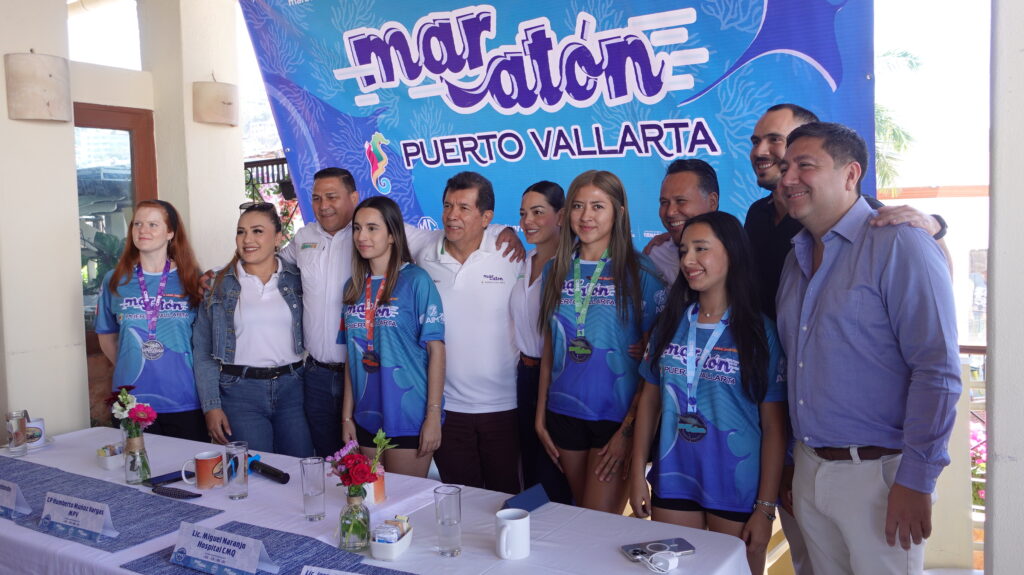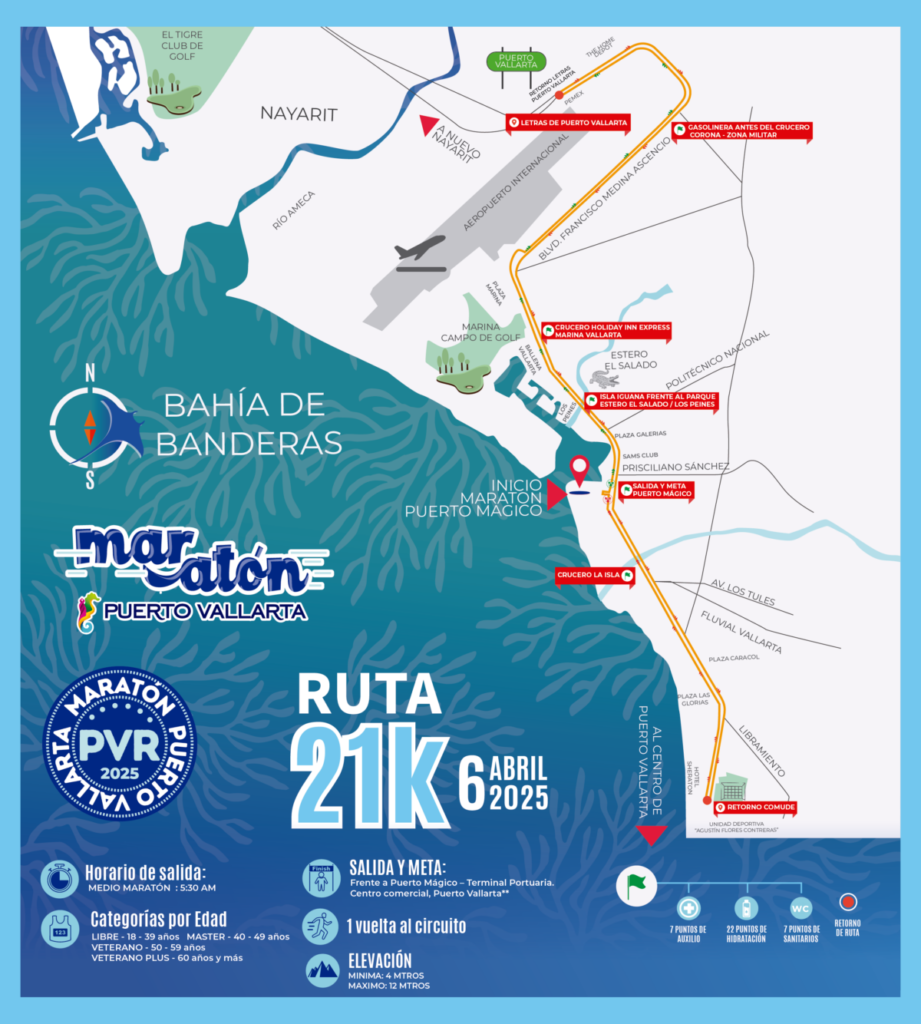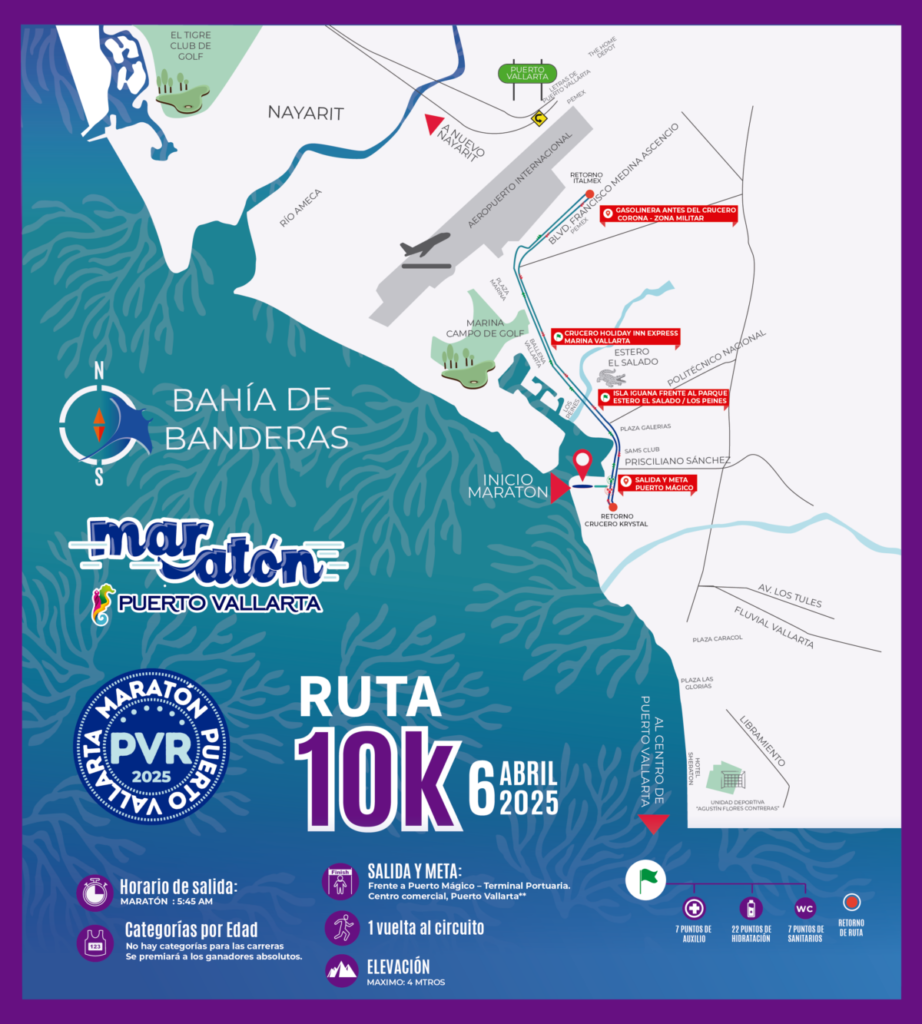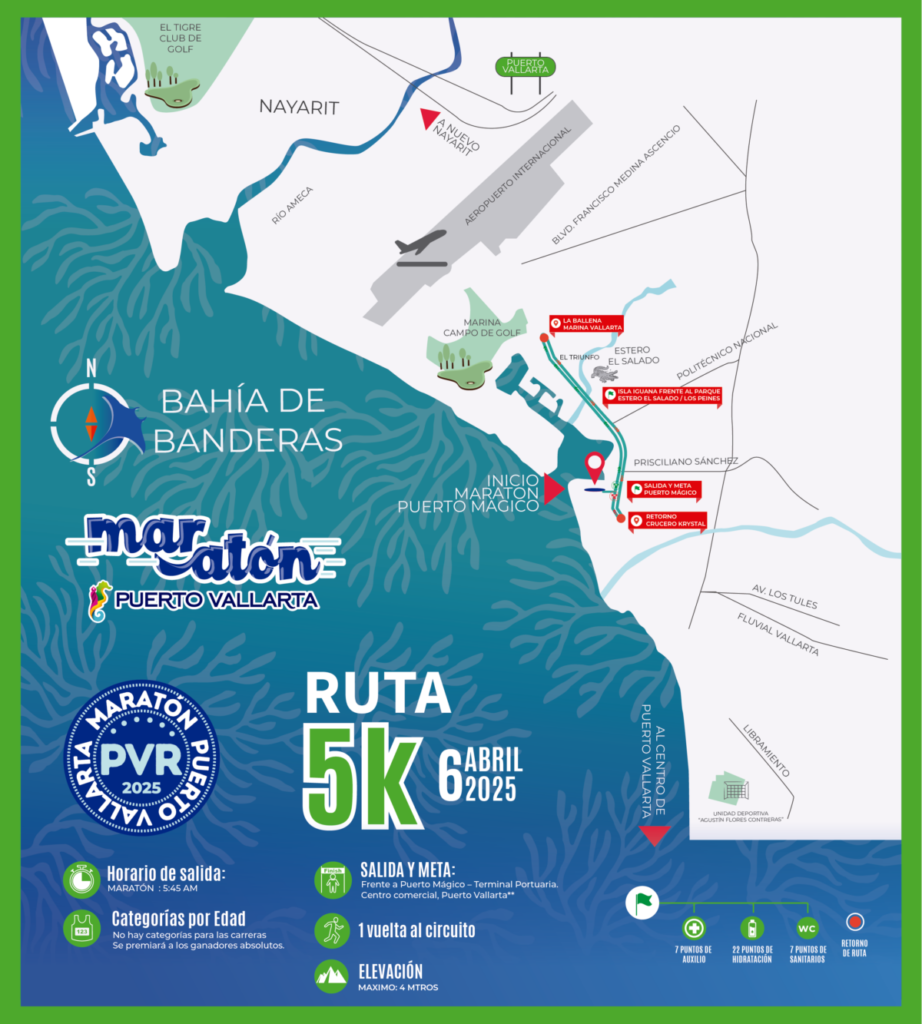The destination will celebrate the thirtieth edition of Gala Puerto Vallarta – Riviera Nayarit, the most important tourism trade fair in the region.
On March 20 and 21, the Puerto Vallarta Tourism Trust will be celebrating by welcoming a significant number of business partners, including 90 wholesale agencies, 60 hosted buyers, 115 hotels in the region, the tourism trusts of Guadalajara and Costalegre, 15 magical towns in Jalisco and Nayarit, specialized media, national and international airlines, as well as executives from the Puerto Vallarta and Tepic airports.

Although this year’s Gala event is held in Nayarit, the Jalisco destination will host a significant number of these partners and several events, such as the “Spring Night Party” welcome cocktail party, which will take place on March 19 at 7:00 pm in Plaza Lázaro Cárdenas, better known today as Parque de los Azulejos.
Without a doubt, Gala Puerto Vallarta – Riviera Nayarit continues to position itself as the most important tourism event in the region. It establishes alliances and cooperative strategies between the destination’s commercial partners and the hotel industry, determining what actions will be taken to boost the market in the coming seasons.
In addition to those mentioned above, the event will also be attended by municipal and state authorities, consular agents, presidents of local chambers and associations, representatives of the hotel and tourism sector, national inbound tour operators—some of them members of CONEXSTUR—, suppliers, and companies specializing in niche areas. With its wide variety of natural sea and mountain settings, events, and outdoor activities, the Puerto Vallarta metropolitan area has positioned itself as the ideal sun and beach destination for different market niches, such as luxury, romance, LGBTQ+, MICE, medical, and golf tourism, which has increasingly attracted service providers specializing in these segments to the destination.
Gala is part of the joint agenda between the Puerto Vallarta Tourism Trust and the Nayarit State Tourism Secretariat, which serve as liaisons between the tourism sector and strategic partners. This major event fosters closer ties among all stakeholders to forge alliances and increase visitor flow, ensuring tourism continues to grow for the benefit of the entire region.
In addition, the event will feature coverage by 60 regional, national, and international media outlets. All this media exposure will contribute to further increasing the destination’s visibility globally.
With nearly 1,500 business meetings scheduled to generate competitive rates and secure hotel inventory sales, the event is expected to boost occupancy in the coming seasons and thus increase the destination’s economic impact, which in 2024 was $40.791 billion pesos.
It’s worth noting that Gala attracts more participants each year thanks to its variety of hotel products, events, and experiences that make the destination a place to visit repeatedly.
We provide information and resources for visitors to Puerto Vallarta, areas of The Riviera Nayarit and other destinations in both states of Jalisco and Nayarit . You will find variety of content, including articles, blog posts, videos, photos, descriptions and interviews, all of which are designed to help visitors plan their trip, including attractions, restaurants, and events. https://promovisionpv.com/

Visit and Subscribe to our YouTube Channel for more Puerto Vallarta – Riviera Nayarit 220+ videos: https://www.youtube.com/@promovision/videos
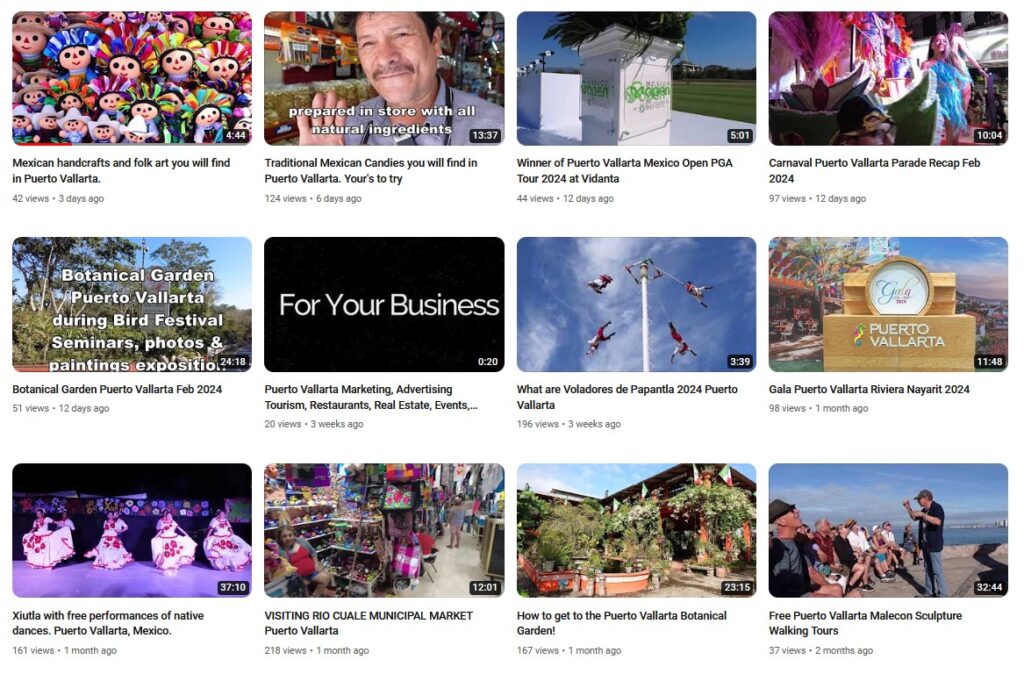
Puerto Vallarta – Riviera Nayarit Archives 2024 https://promovisionpv.com/puerto-vallarta-nayarit-archives-2024/ Over 500 pages:
Somethings you may not know about Puerto Vallarta, Riviera Nayarit and Mexico
archives puerto vallarta, arts, bucerias, cirque du soleil, costa alegre, culture, destination wedding, events, events schedule, gastronomy, gay pv, gay vallarta, informations, insurance, Jalisco, lgbtq, medical care, mexican food, Nayarit, news, Nuevo Nayarit, Punta Mita, Rincon de Guayabitos, safety, San Blas, San Pancho, Sayulita, tourism, tours, travel, travel blog, travel guide, travel tips, wedding, YouTube videos, attractions, beaches,
Web site: https://promovisionpv.com
YouTube: https://youtube.com/promovision/videos
Instagram: https://instagram.com/promovisionpv/
LinkedIn: https://www.linkedin.com/in/ray-dion-48861926/
X: https://x.com/promovisionpv
Threads: https://www.threads.net/@promovisionpv
Facebook: https://facebook.com/ray.dion.73
Blue Sky Social: https://bsky.app/profile/promovision.bsky.social
Marketing, Advertising Tourism, Restaurants, Real Estate, Events, Tours, Puerto Vallarta – Riviera Nayarit https://promovisionpv.com/marketing-advertising-tourism-restaurants-real-estate-events-tours-puerto-vallarta-riviera-nayarit-2/



